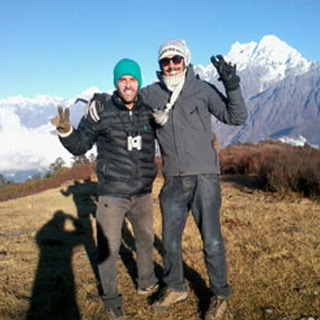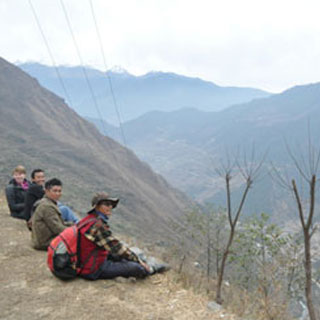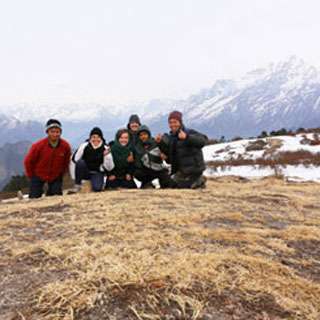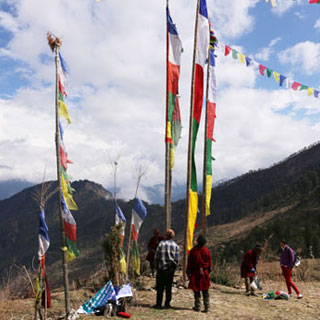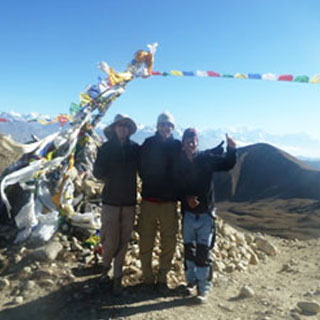Festivals
Nepal is not only the land of mountains; it is also the land of festivals. There are more than 50 festivals celebrated in Nepal every year. While the national festivals have fixed dates, religious festivals are set by astrologers following the lunar calendar. The best part about the festivals in Nepal is that all the events are celebrated with the same enthusiasm and galore the way it used to be hundreds of years ago when people had no other means of entertainment.
Dashain (Bijaya Dashami):
During the month of Kartik (late September and early October), the Nepalese people indulge in the biggest festival of the year, Dashain. Dashain is the longest and the most auspicious festival in the Nepalese annual calendar, celebrated by Nepalese of all caste and creed throughout the country. The fifteen days of celebration occurs during the bright lunar fortnight ending on the day of the full moon. Thorough out the kingdom of Nepal the goddess Durga in all her manifestations are worshiped with innumerable pujas, abundant offerings and thousands of animal sacrifices for the ritual holy bathing, thus drenching the goddess for days in blood.
New Year:
It is known as “Navavarsha” in Nepal. Nepal has its official calendar that begins from the first day of the first month Baisakh. This very first day is observed as Nepali New Year which usually falls in the second week of April. People go for picnics, have get-togethers and celebrate the day socializing in various ways as this day is also a national holiday.
Lhosar (Budhist New Year):
Losar New Year is a widely celebrated holiday, and celebrations usually last for 15 days. The first three days are the most important, and peoples usually spend these days with their closest family members and friends. On the first day, many Peoples visit Monasterys, Temple to make donations, greet Lamas, and receive blessings. The day before the start of the New Year, Tibetans bid farewell to the previous year and start making plans for the year to come. On the first day of the New Year, Tibetans welcome it, making offerings to prepare themselves for a fresh start as they enter the New Year.
At the beginning of the New Year, congratulate a Tibetan with the phrase “Losar Tashi Delek!”
This Loshar Celebrating the Tibetans, Tamang and Sherpas of Nepal who leaving in Himalayn Region.
Present Hada, the white ceremonial scarf, to the eldly of the family
During the festival, people celebrate by some ancient ceremonies which represent the struggle between good and evil. Lamas are chanting and passing fire torches through the crowds. People perform the dance of the deer and amusing battles between the king and his ministers, and so on, people are cheering for the coming new year by dancing, singing, and merrymaking.
Tips: the actual date of Tibetan New Year may be different from Chinese New Year. But, it won't be too far away. Tourists can see how Tibetans make New Year dishes like Guthuk and exorcize ghost for New Year, and how do they visit friends with auspicious Chemar and why do Tibetans burn pine branches to worship mountains gods, etc.
Dec, 29th on Tibetan Calendar (Tibetan New Year Eve)
Eat Guthuk (or Gutu); Exorcize Ghost
The beloved New Year’s Eve Tibetan tradition is gathering with the family to eat Guthuk – noodle soup with fortune-telling dough balls. Each family member gets a dough ball with different fillings that have a prediction for next year.
In the evening, Tibetans flock to the streets to enjoy fireworks.
Prayer flags on the rooftops of houses
Peoples enjoy celebrating New Year for 2 weeks. On the second day, many Buddhist peoples stay at home to spend more time with family, while others start visiting the homes of their friends or relatives. When visiting other homes, Tibetans bring auspicious deeper “chemar bo” – a wooden box with traditional offerings. The box contains tsampa, roasted barley flour, mixed with butter and barley grains. On the next day, Tibetans start visiting monasteries and temples to make offerings and burn incense. At the beginning of the New Year, Tibetans help to replace prayer flags on the high poles in front of the Jokhang temple. Tibetans will also hang new prayer plays on the rooftops of their houses and buildings. The five colors of prayer flags symbolize a natural element.
Peoples wearing traditional dress
On the first few days of the New Year, many Tibetans visit monasteries and temples. Tibetans wear their best traditional clothes. Since many Tibetans are coming to Lhasa from different parts of Tibet, you can see an incredible variety of different styles and decorations. It is probably the best time to enjoy people-watching and experience the traditional way of life of Tibetans.
Tibetan New Year is a holiday that locals usually celebrate with family and friends. There are no large festive activities. Since many locals come to offer donations to monasteries, all important monasteries and temples in Lhasa are open on this day but are often very crowded.
Saraswati Puja:
Saraswati Puja or Shree Panchami is a day to celebrate the birthday of Saraswati – the Goddess of Learning. This is a day when people from school students to scholars worship their pens and books to please the Goddess and expect her favor in their studies so they become wise and knowledgeable. People also throng around the idol of Goddess Saraswati, especially in Swayambhunath and offer flowers, sweets, fruits, etc. On this day, small children are taught to read and write and people write on the stones and slabs with chalks and pencils. This day, which falls between January/February is regarded as a very auspicious day for marriages too as it is believed that Goddess Saraswati herself blesses the couples. Normally it is the astrologers who fix the marriage date and time in Nepal.
Shivaratri (Maha Shivaratri):
Shivaratri or the night of Lord Shiva that falls sometime between February/March is one of the major festivals of Nepal. This day is dedicated to the Lord of the Lords – Lord Shiva or Mahadev who lived in Mt. Kailash in the Himalayas. Lord Shiva is the most worshipped God in the Hindu religion. More than 100,000 of Hindu devotees from India and Southeast Asia throng weeks ahead of the festival and gather in and around Pashupatinath temple – one of the holiest shrines of the Hindus in Kathmandu to pay their homage to Lord Shiva on his birthday. “Pashupatinath” literally means “the Lord of animals” as Lord Shiva is considered as the guardian and protector of everything that exists in the Himalayan Kingdom. On this holy day, worshippers take dip and bath in the holy river at early dawn and fast for the whole day and stay around fire to keep them warm as it is still winter in Nepal. The devotees also freely indulge in using marijuana and other intoxicating substances as these things are believed to please Lord Shiva and marijuana use is legal only on this sacred day. More ...
Holi:
This festival of water and colors that falls between February/March is also known as “Phagu” in Nepal. This day is observed to rejoice the extermination of female demon Holika who together with her King brother conspired to kill his son Pralhad, an ardent devotee of Lord Vishnu. This day, playful people especially the young ones wander through the streets in groups on foot or vehicles with various colors smeared all over them and the people in houses make merry throwing colors and water balloons at each other and also to these people on the streets.
Ghode Jatra (Festival of Horses):
This festival takes place between March/April and a grand horse parade takes place at Tundikhel. Although this festival does not have much of religious aspects, a large number of people, even from outside Kathmandu flock around Kathmandu to witness the horse race and other exciting sports activities performed by the Army in the presence of the King and the Royal family.
Buddha Jayanti:
Buddha’s birth anniversary is celebrated every year during May in Nepal, and its we call The Birthday of Buddha
According to the scriptures, the date of Buddha’s birth is different from the conventional viewpoint. It is not the date when he was born, but the day when he entered the womb of his mother. In other words, it is the day of his conception. According to Buddhist philosophy, the first moment of consciousness with the contact of the parent’s cells in the womb of the mother is considered to be an actual birth. It is the very beginning of life or rebirth. That’s why the moment when historical Buddha entered the womb of Queen Mahayana of the Shakya Royal family on the full moon day of the Vaisak month is regarded as Buddha Shakyamuni’s birthday.
Saga Dawa On this month peoples swarm in Swayambhunath and Boudhanath to preying homage to Lord Buddha and also visit Buddha’s birth place in Lumbini and chant prayers and burn butter lamps. Lord Buddha was born as Prince Siddhartha Gautam but he abandoned his luxurious life when he realized the misery of mankind and went in search of enlightenment. Same time in Gatlang Mani festival and some place Dumche festival.
Tibetans consider the Saga Dawa festival to be one of the most auspicious religious practices in their life. In Tibetan “Saga” is the name of a star most visible during the fourth lunar month of the Tibetan calendar and “Dawa” means month. The festival is one month long, starting from the new moon of the fourth month, and ending with the full moon of the next month. In the Gregorian calendar, it usually falls on May – June.The full moon day or the 15th day of the month is called Saga Dawa Duchen. It is the most special day of the month. In Tibetan “Dunchen” means great occasion. It is the most important day in Buddhism.
This day during the Saga Dawa Festival worships the life of Buddha and coincides with three main events in his life:
Gai Jatra (Cow Festival):
This festival of cow is celebrated every year in August/September. This is one of the most popular festivals in Nepal as it is full of humor, satire, comedy, mockery and shades of sadness too at the same time. And on this day satires and jokes on anybody is legal. As per the tradition, the family who has lost a relative during the past one year must take part in a procession by sending young boys in cow like attire and walk through the streets of Kathmandu lead by a cow. Cow is regarded as a Goddess and it is also the national animal of Nepal. This festival also purges many who have lost their loved ones as they get to console themselves as to they are not the only ones who have been bereaved and it also teaches to accept death as a part of life.
Krishna Janmastami:
The birth anniversary of Lord Sri Krishna, believed to be the 8th incarnation of Lord Vishnu falls sometime in August/September. All the devotees assemble in Krishna Mandir, the ancient Krishna Temple in Patan Durbar Square and other temples with the idol of Sri Krishna and offer prayers, flowers, food, sweets and chant hymns too.
Teej:
This is a Hindu married woman’s day for her man. This festival is celebrated in August/September. Women clad in beautiful red saris with shining potes (glass beads), singing and dancing is the sight almost everywhere in Nepal during the festival of Teej. On this day women observe a fast and pray Lord Shiva for the long, healthy and prosperous life of their husbands and their families. The unmarried women also observe this festival with unabated zeal with the hope that they will get to marry good husbands. From early dawn, women queue up in the multiple lines in Pashupatinath to offer their prayers to Lord Shiva.
Indra Jatra:
This festival named after Lord Indra- the God of Rain and also the King of Heaven is celebrated by both the Buddhists and Hindus in Nepal in August/September. This festival lasts for eight days with singing, mask dancing and rejoicing. The chariot of Kumari – the Living Goddess is taken through the main streets of Kathmandu with much fanfare. On the first day, the King of Nepal also pays homage to Goddess Kumari. The crowd of excited people from performers to spectators engulfs the streets of Kathmandu during this festival. People get to enjoy various classical dances like elephant dance, lakhe – a very popular dance of a man with a mask.
Tihar:
This festival of lights that falls between October/November is the second biggest festival after Dashain. This festival lasts for five days and people worship Laxmi – the Goddess of Wealth. All the houses are cleaned and decorated with the belief that Goddess Laxmi will enter the house that is the cleanest and people lit candles, oil lamps and other lights and the whole place looks illuminating. During the five days, crows, dogs and cows are worshipped and honored with vermilion, garland and delicious food for what they have done in the lives of humans. Crows are regarded as the messenger that brought news even during the times when there were no postmen and no postal services. Dogs are the most obedient animals and they guard our house as true guardians. Cow is also a symbol of wealth in Hinduism and she is also the national animal of Nepal. During Tihar, the Newari community in Nepal also observes Mha puja – a ritual of worshipping one’s own body and life. On this very day, the Newari New Year which is also known as Nepal Sambat begins. The festival ends with Bhai Tika – brothers’ day when his sisters worship him for his long and healthy life to safeguard the lives of his sisters. This is also a gambling time in Nepal as gambling is not illegal during this festival.
The documented Nepal visinears the end, the spotlight has been refocused on this beautiful Himalayan country as it continues to recover from April 2015's catastrophic earthquake. For many travelers, reaching Nepal's.
Nepal is a safe and welcoming country to visit, and tourism supports both the local economy and rebuilding efforts around the country.
Come and join us for a life changing experience – with Himalayan Unforgettable Adventure!
Traveler’s Says
We did the Langtang Valley Trek with Nyima Chhomo (the daughter of Durga Tamang) and were really happy with everything. We enjoyed having a female guide which is really uncommon in trekking in Nepal. The trek was stunning and well organized.… [More]
Hannah Kraft and Solveig Leas, GermanyDear Durga, The three of us are very well and have enjoyed this week a lot! I really liked how authentic it was. We shared some nice moments with the home owners, like seeing a freshly slaughtered hen getting prepared for… [More]
Guillaume Billardon, SwazilandMy husband & I booked a private trek
combining the Tamang Heritage & Langtang trails. Our guide, Nyima Chhomo, and porter, Dobar, were wonderful hosts throughout our 13 day adventure. Their local knowledge was evident and we were glad to have… [More]
Andrea ODonnell & Tim ODonnell, United StatesExcellent experience - Tamang Heritage Trek We took the Tamang Heritage trek September 2024 and it was a wonderful experience. The trip was organized as promised and the guide, Pasang, was exceptional. Pasang is from the local villages so knew many… [More]
Shareen Leland and Marian, United StatesBonjour Durga Tamang, Tout s’est bien passé à Katmandou, nous avons pu prendre le temps de visiter la ville tranquillement. Nous sommes rentrés un peu fatigués du trek mais nous sommes contents, c’était vraiment une bonne expérience et nous sommes ravis… [More]
Hélène Theodori et sa famille, Trekking, FranceDear Durga-- I hope this note finds you and your lovely family well. Happy New Year! Thank you very much for your good wishes a few weeks back. We all had covid in my family, and we are only just getting… [More]
Jennifer, AustraliaHello, Durga my friend. The trek was an amazing experience and despite having to shorten the trip we both are grateful for the experience. Both Krisna and Nyima were a big part of the reason that we had a great experience.… [More]
David William Merrifield, United StatesNamaste Tamang, I think Pasang is a really good guide, just a must take more attention for the most powerless person in a group. The guide has the responsibility for the tourist, and must be so slow during Trekking like the last… [More]
Ayu Mielke, GermanyOrginally I wanted to do some trekking but having only 14 days, I wanted to see Temples and World Heritage locations too, like where Buddha was born, so with Durga's help decided to do the 10 day "Exploring Hertiage side" and… [More]
Gary Michael Clark, United StatesCannot recommend enough! Durga is extremely friendly and went above and beyond to make our trip welcoming and smooth (not just on the trek- before and after as well)
Samdu (our guide) was extremely friendly and helpful, couldn't have done… [More]
The best thing you'll ever do! The trek was unbelievable, Durga was extremely welcoming, friendly and helpful. Making the whole thing so smooth. Samdu our guide was perfect, couldn't have been more helpful. Hassan our porter was amazing, I don't know… [More]
MR DANIEL HORROCKS, United KingdomGreat experience at Langtang Valley. Durga the owner took care of meeting all my requests and tailor-made the experience according to my needs. My guide was enthusiastic and nice. Highly recommended.
[More] Esteban Camargo, ColombiaTamang Heritage Trail, Langtang Valley Trek
Nach der Empfehlung im Stefan Loose Reiseführer hatten wir uns bereits zuhause bei der Vorbereitung unserer Reise mit Durga Tamang in Verbindung gesetzt. Das persönliche Gespräch in Kathmandu hat uns dann voll bestätigt, mit Himalayan… [More]
Heinz und Elisabeth, GermanyIt was my first visit to Nepal and I was anxious about my ability to manage the trek. I am 58 and keep active and fit but I am not used to the heights of the Himalayas. Thanks to Durga's care… [More]
Katherine Westfold, AustraliaChoosing Himalayan Unforgettable Adventure and Durga Tamang as our (local!) travel company and trekking guide was definitly the best decision for our Nepal trip. Not only that the trekking was organized in a thoughtful way! Durga showed us through spectacular landscapes… [More]
Leonhard Jungwirth, AustriaI came to Kathmandu with the idea in mind to do some trekking, but without having anything planned. When I first arrived there I got in touch with some agencies in Thamel but I didn't trust them much because they seemed… [More]
Allen, ItalyChoosing to have Durga guide my trekking partner and I was one of the best decisions Ive ever made. We trekked Langtang valley at the end of monsoon season and truly experienced the culture of the Nepali and Tibetan. Plus, you… [More]
Noah Willison, United States"Langtang valley Trek"
Mar 28th 2016 Namaste: We really enjoyed out trip to Langtang with you Durga Tamang. Everything was planned perfectly and we were thrilled to get the whole family onto the top of Kyanjin Ri. Langtang is safe now.
… [More]
"Tamang Heritage Trek"
May 17 2016 Namaste: Overall our experience in Nepal with you was really amazing, the days we spend in the Tamang Valley, walking around that beautiful views of mountain peaks, forests and little villages were the best part of… [More]
Oriol Fonos, SpainDonna and I had a great experience on our trek of the Annapurna circuit. The scenery, the trail, mountain villages, and the Nepalese people were exceptional as we expected.
Himalayan Unforgettable Adventure provided the transportation, guide, porters, meals and accommodation for… [More]
Bill and Donna Bauer, CanadaWhen we began planning our trip to Nepal in 2015 we began to quickly realise just how many decisions we were going to need to take to put together our itinerary, not least being the extensive options available to you when… [More]
Simon and Caroline, British Indian Ocean TerritoryIn October 2015, my husband and I went trekking in Nepal with our friends Bill and Donna. We were a private group and originally our plan was to hike the Langtang valley. We decided to book our trek through Durga Tamang who runs Himalayan… [More]
Anne and Harry Range, CanadaI just finished the Langtang Valley trek with Durga Tamang as my guide and Nima Lama as my smiling hard-working porter. Unfortunately, the weather was uncooperative – constant clouds, drizzle, mist – making mountain views elusive. (But even with that, I… [More]
Mike, United StatesDear Durga ,I want to say thank you so much for the outstanding trip up to the top of kala pather! We had sucha great time with you and Ram. You are an excellent guide and a wonderful person. We felt… [More]
Joe Michael and Kim, ItalyLe treck etait super! Nous sommes passes de village en village, les paysages sont magnifiques. Nous avons vu les differents métiers, des tisseuses, des bergers, des gens dans les cultures, le travail se fait a l’ancienne, c’ est tres interessant. Le… [More]
Jeanne, Jenny and Sarah, LuxembourgFebruary 10 2014 Namaste: We have very much appreciated an approach combining volunteering for RTEES during one week in the small Tamang village of Gatlang, and a 10 days trek in the Langtang valley, organized by Himalayan Unforgettable Adventure.
This… [More]
Isabelle and Alexis, FranceNamaste. We wanted to organise our trek before we arrived in Kathmandu, and after some extensive research came across Durga Tamang and his organisation (that are doing wonderful things for the villages of the Tamang Heritage Trail). Durga was very responsive… [More]
Nelly and Nathan, AustraliaNamaste. We wanted to organise our trek before we arrived in Kathmandu, and after some extensive research came across Durga Tamang and his organisation (that are doing wonderful things for the villages of the Tamang Heritage Trail). Durga was very responsive… [More]
Nelly and Nathan, AustraliaNamaste. We wanted to organise our trek before we arrived in Kathmandu, and after some extensive research came across Durga Tamang and his organisation (that are doing wonderful things for the villages of the Tamang Heritage Trail). Durga was very responsive… [More]
Nelly and Nathan, AustraliaWe contact Durga to make the Heritage Trail and Langtang Trail (1 march to 13 march 2014) and he offer us to go before starting the trek two days at his village, Gatlang, to see the LOSAR FESTIVAL (feb- march Buddhist… [More]
Margarida and Jorge, SpainThis was undoubtedly a unique, an unforgettable experience that I waited for years to fulfill. Thank you so much for turning it real and for showing me the simplicity and greatness of the Himalayan Tamangs and their own kingdom.
Making your… [More]
Miguel Buto, Portugal6 January 2014 Namaste. We wanted to organise our trek before we arrived in Kathmandu, and after some extensive research came across Durga Tamang and his organisation (that are doing wonderful things for the villages of the Tamang Heritage Trail). Durga… [More]
Nelly and Nathan, AustraliaThe highlight of our trip to Nepal was our amazing two week trek along the Tamang Heritage and Langtang trails. The scenery and moutain views in this area are absoutely gorgeous, something we will remember for years to come. The trip… [More]
Margit McLaughlin, United StatesWe contact Durga to make the Heritage Trail and Langtang Trail (1 march to 13 march 2014) and he offer us to go before starting the trek two days at his village, Gatlang, to see the LOSAR FESTIVAL (feb- march Buddhist… [More]
MARGARITA AND JORGE, SpainFebruary 10 2014 Namaste: We have very much appreciated an approach combining volunteering for RTEES during one week in the small Tamang village of Gatlang, and a 10 days trek in the Langtang valley, organized by Himalayan Unforgettable Adventure.
This approach… [More]
Isabelle and Alexis, FranceNamaste: We did the Heritage Trail and Langtang Valley Trail with Durga and his team and was a wondurful experience. That mountains are so beautiful and the village people are very friendly and kind. I really recommend do that trails with… [More]
Margarida and Jorge, FranceDate: 22 Oct 2013 Our Upper Mustang trek was an amazing experience both in terms of the unusual physical beauty and the ever-present stream of spirituality, especially in the extraordinary medieval city of Lo Manthang. Durga Tamang, our trekking guide, made… [More]
Mylo Schaaf and Dan Lowenstein, United StatesDurga is a really nice men. when we first met him we already had some bad experiences with tour guides in Kathmandu who tried to sell very hard there trekking trips. but durga wasn't like those man. he made directly a… [More]
Antilia and Luc, FranceTravelling alone, and with the idea of going trekking, I started to inform myself, which trail I should choose. I read about different treks and choose the Heritage Trail, because it is a relatively new trek, easy to walk and everyone… [More]
Michael, United StatesDurga is a really nice men. when we first met him we already had some bad experiences with tour guides in Kathmandu who tried to sell very hard there trekking trips. but durga wasn't like those man. he made directly a… [More]
Alex , Jana and Adrian, Germany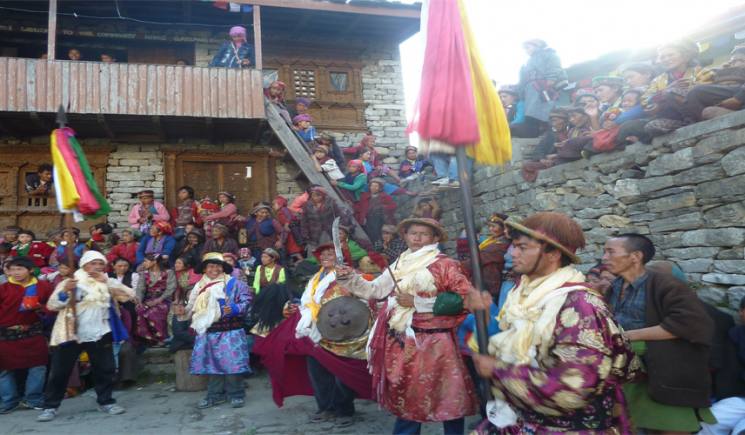
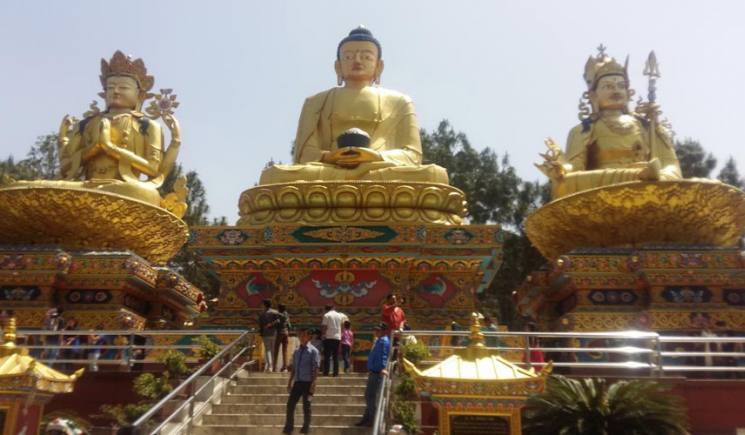
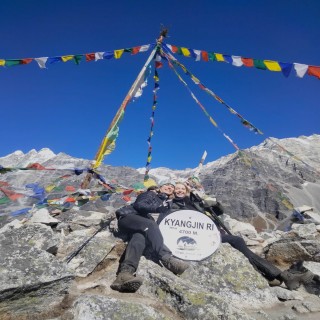
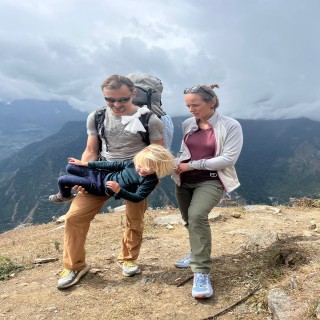
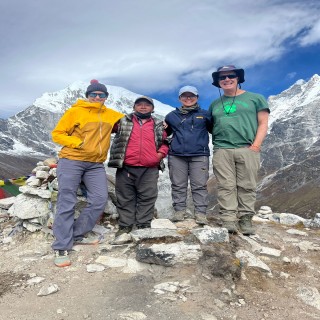
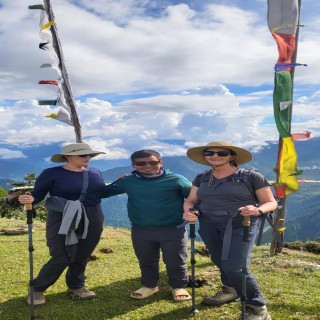
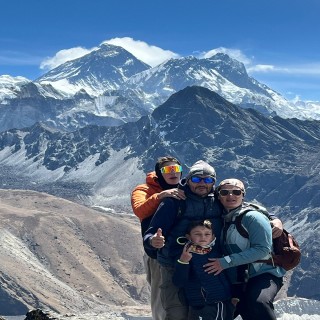
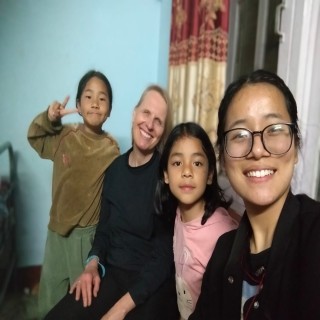
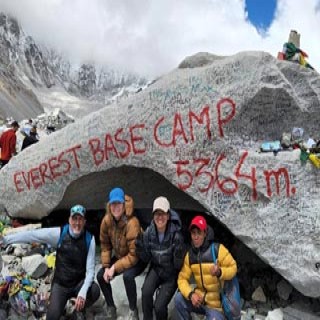
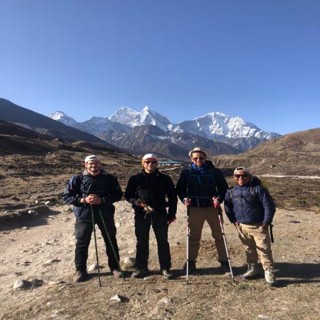
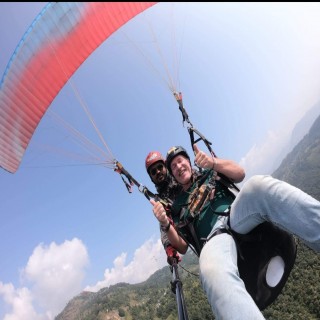
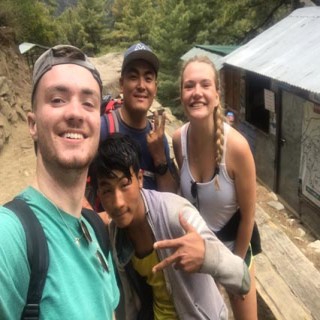

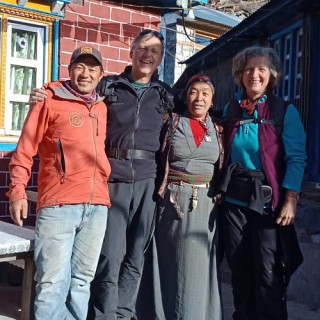
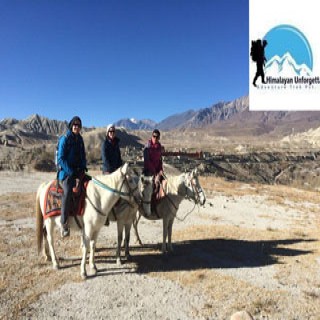
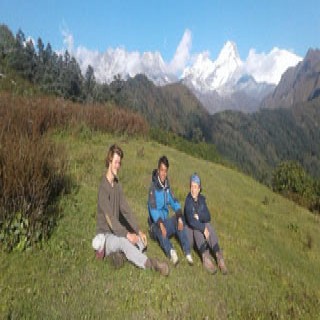
.jpg)
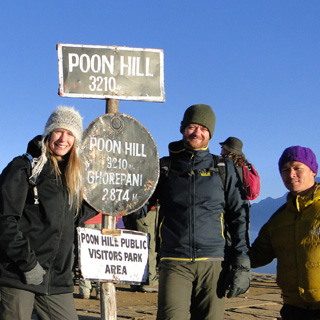
.jpg)



.jpg)

